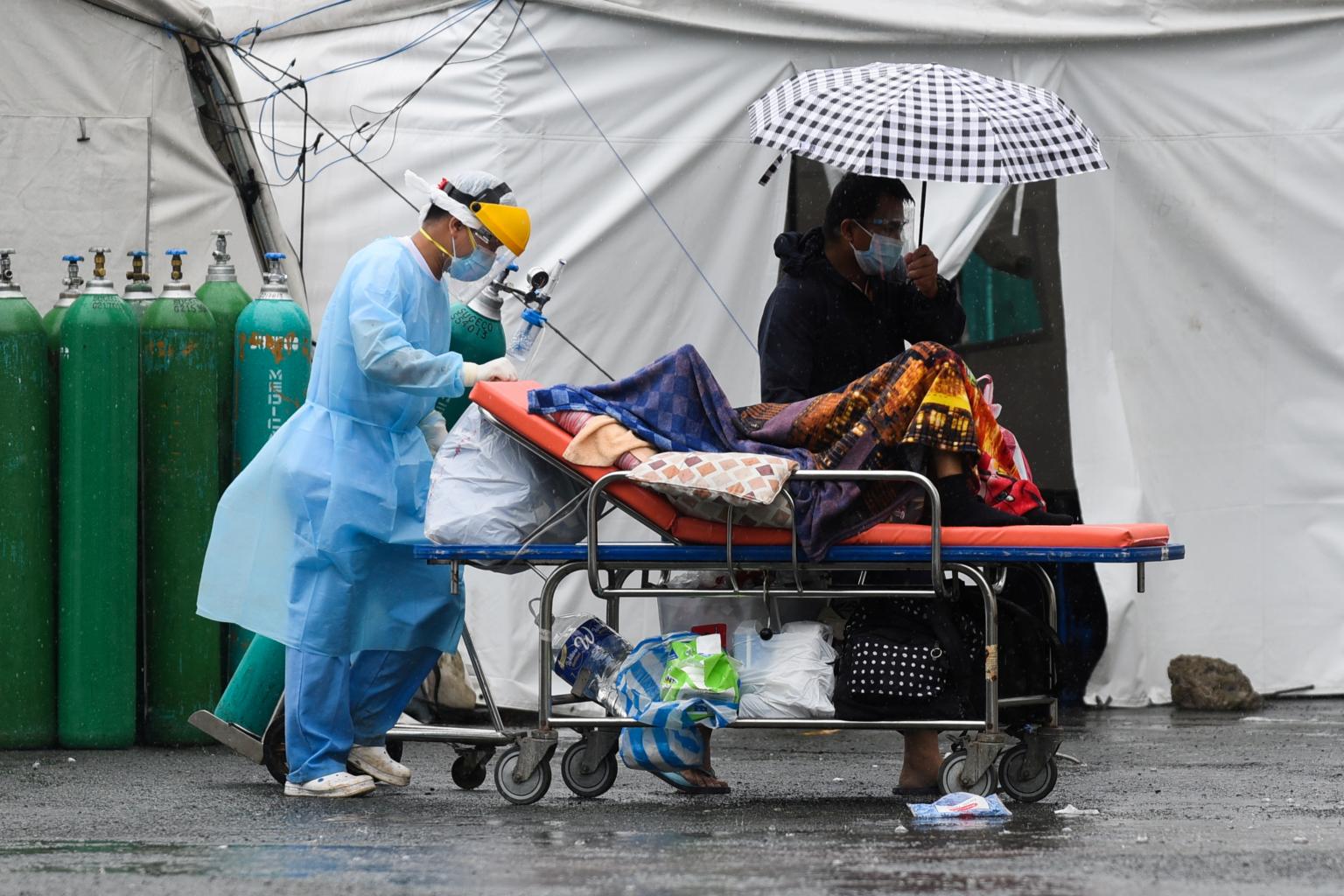Covid-19 spread slows in Philippines' capital, other areas as curbs take effect
Sign up now: Get ST's newsletters delivered to your inbox

The latest reproduction number for Metro Manila was at 0.99, down from 1.03.
PHOTO: REUTERS
Follow topic:
MANILA (PHILIPPINE DAILY INQUIRER/ASIA NEWS NETWORK) - The Philippines' Covid-19 numbers have improved in the Metro Manila region and the tranmission of the disease has slowed.
The latest reproduction number for the region, which refers to the number of persons an infected person can transfer the virus to, was at 0.99, down from 1.03, OCTA Research fellow Guido David said on Thursday (Sept 23).
"This means the transmission is slowing down, but of course, we still need to be careful because many people are still in the hospitals," David said in a televised briefing, adding that the average number of cases also went down by 20 per cent this week to 4,600 from 5,800.
However, he cautioned that the downward trend has only just begun and that the number of cases remained high, which means people still need to make sure they comply with health protocols.
He said infections in Metro Manila have been going down since hitting a peak of 26,303 cases on Sept 11, noting that the granular lockdowns, imposed starting last week along with a new alert level system, helped reduce the number of cases.
"It's been a week, so that means we are seeing an effect of the granular lockdown, and we have yet to see a spike in cases for now. It means the interventions we are doing to bring down the number of cases continue to be effective," he said.
Start of recovery
Asked if restrictions could be eased, David said the drop in the reproduction number was just the beginning of the recovery process.
He noted that many hospitals were still full and this was a factor to be considered when deciding whether or not to relax quarantine rules.
He also said it was not just in Metro Manila where the reproduction number was less than one.
The situation was similar in Cavite (0.87), Laguna (0.90), Bulacan (0.86) and Cebu City (0.66).
In Davao City, the reproduction number was at 1, he added.
The country's COVID-19 reproduction number has been above 1 since around the first week of July, according to reports from the Philippines' Department of Health (DOH).
The reproduction number dropped to less than 1, or at 0.93, in the first week of June and stayed below 1 until the end of the month.
Around that time, Metro Manila and nearby provinces had been placed under general community quarantine (GCQ) with "heightened restrictions".
A reproduction number of less than 1 means that, on average, a Covid-19-positive individual is infecting less than one person, eventually stopping the transmission of Covid-19.
The DOH noted that the reproduction number was around 2 early on in the Covid-19 outbreak, which meant that every person confirmed with Covid-19 was infecting two other people.
Still early
Despite the improving numbers, however, the DOH on Thursday said it was still too early to determine if Metro Manila could be downgraded from alert level 4 to alert level 3.
"We are looking at other factors that may contribute to the decrease of figures in case metrics, such as laboratory testing output and active case finding," the DOH said.
The DOH added that the pilot alert level system with granular lockdowns was implemented less than a week ago.
"We have been repeatedly emphasising that the trends are not cast in stone and are still dependent on the performance of the government, both national and local, and the public in the implementation and adherence to our existing protocols and policies," the DOH said.

